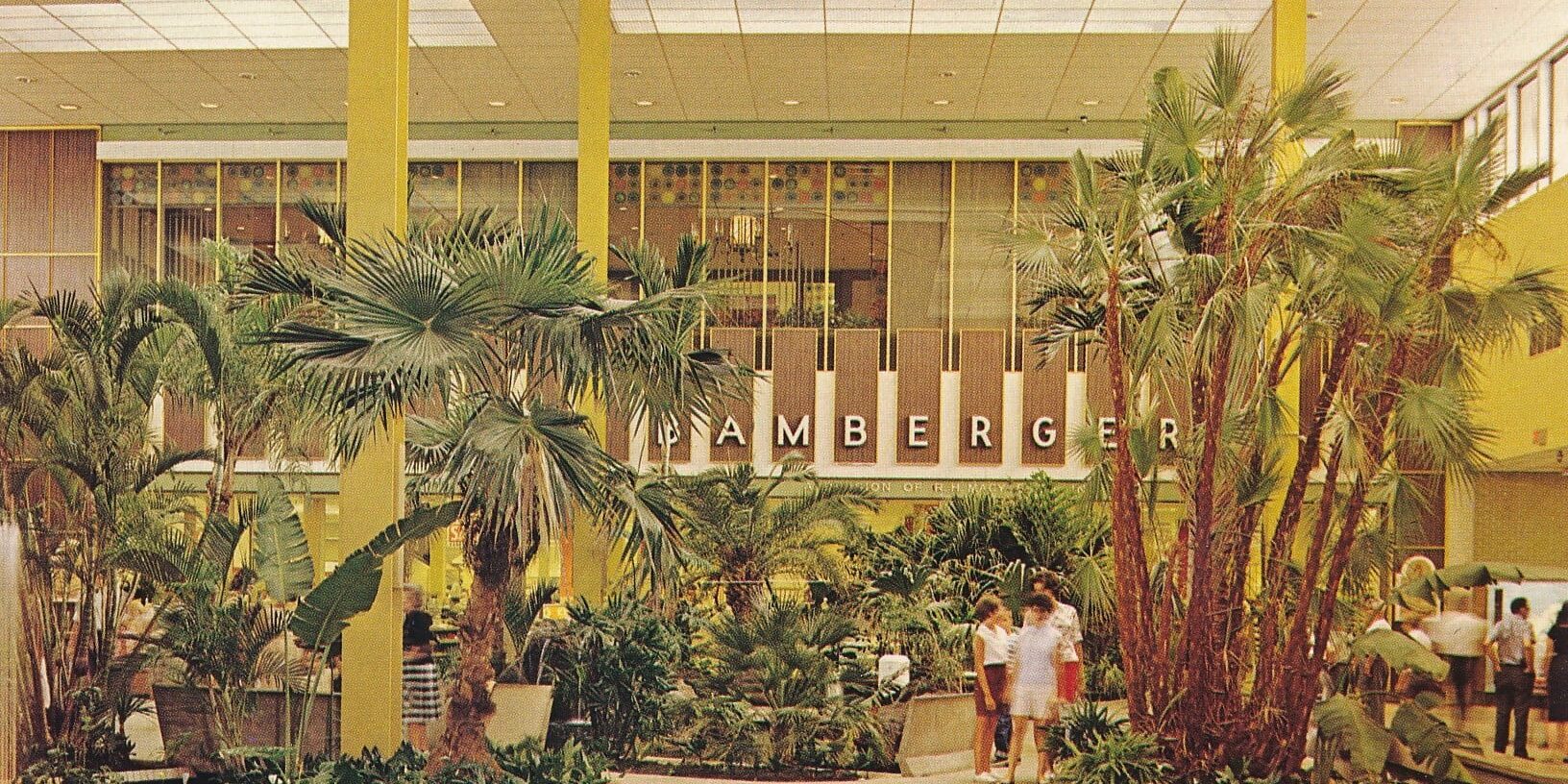JERSEY MALL
When Viennese architect Victor Gruen designed Minneapolis’s Southdale Center as the first indoor shopping mall in 1956, his idea was to recreate the pedestrian-oriented town center for the centerless, auto-dominated suburbs then being built. He never suspected these retail mega-generators of auto-sprawl would replace the town centers he was trying to celebrate.
In 1961, Gruen took the concept to New Jersey designing the Cherry Hill Mall for the South Jersey suburbs of Philadelphia. One year later, the famed retail center inspired hosting Delaware Township to change its name to Cherry Hill.
ON THE MALL AT CHERRY HILL.
Gruen showcased the Cherry Hill Mall’s year-round climate control by creating tropical gardens with little bridges crossing faux brooks. As a child, I ran through this mall-jungle without a coat in January thinking the future was now. Bamberger’s anchored the center from which extended a concourse of shops called the Delaware Mall. The name suggests Gruen’s original intent that Cherry Hill was a community center with a mall rather than the whole complex being a mall. In addition to the Delaware Mall, Cherry Hill had a Market Court with a supermarket, bank and two liquor stores, businesses not typically associated with later malls. By 1977, when Market Court was demolished it was clear what the shopping mall format had become, and it wasn’t community center.

The water feature -a two-tiered fountain on bubble-patterned terrazzo at Cherry Hill Mall- was a mall mainstay until the 1990s when these park-like spaces were pushed aside for more versatile event space with greater potential for generating revenue.

A massive, multi-tiered fountain built for the center of the Deptford Mall when it opened in 1975 was eventually ripped out and paved over for event space.

The ultra-modern Moorestown Mall opened four miles down the road from the Cherry Hill Mall in 1963 with a fountain in the center and dendriform columns.

Like the aviary at the Southdale Center, Gruen put a giant parrot cage at Cherry Court in center of the Cherry Hill Mall and surrounded it with more tropical plants. Aside from being a retail center, the mall was thought of as a public park where people could sit, relax and visit with their neighbors in climate-controlled comfort without being pestered by traffic. Ironically, Victor Gruen hated the automobile, thinking it was a great destroyer of town centers. The mall was supposed to be the antidote.

Cherry Hill Mall’s first-generation food court was a Woolworth’s lunch counter erected on the mall outside the store rather than inside. The idea that things were “on” the mall rather than “in” the mall suggests the community focus of the main concourse as if it were a street rather than a building.

By 1970, when the Echelon Mall opened in nearby Voorhees Township ultra-modernism had been replaced by a creeping-quantification inline with the Colonial Revival reboot that continued until the Bicentennial.

In a retail environment increasingly dominated by online shopping, Voorhees, New Jersey’s Echelon has shifted to the Dead Malls list after losing all three of its anchor department stores; Sears in 2001, JCPenney in 2003, and Macy’s in 2017. Echelon like many other fading shopping malls are reconsidering Victor Gruen’s original idea of a pedestrian-oriented town center. The mall was rebranded the Voorhees Town Center in 2007 and is considering a mixed-use redevelopment that would include housing and entertainment venues. The Voorhees Township municipal offices moved into the mall in 2011.


